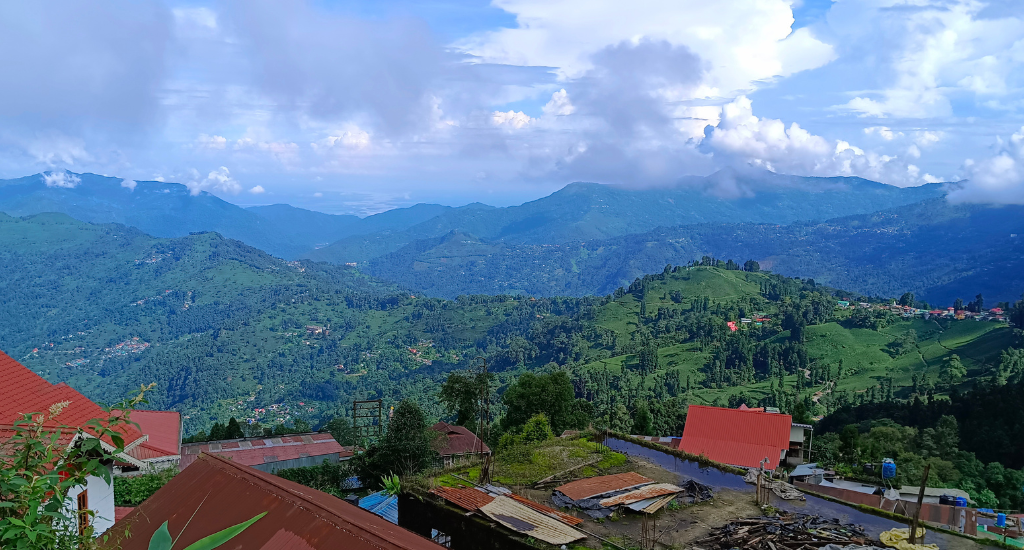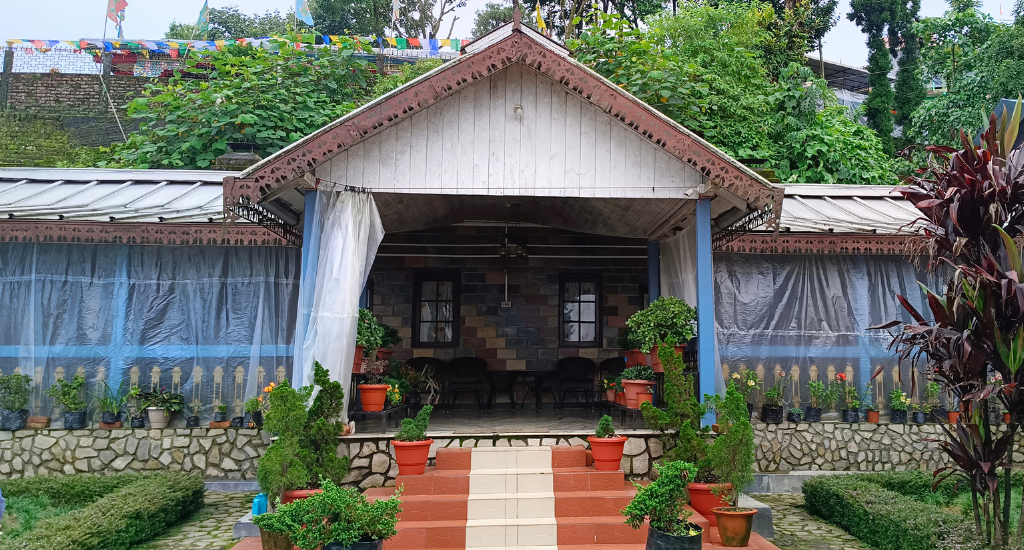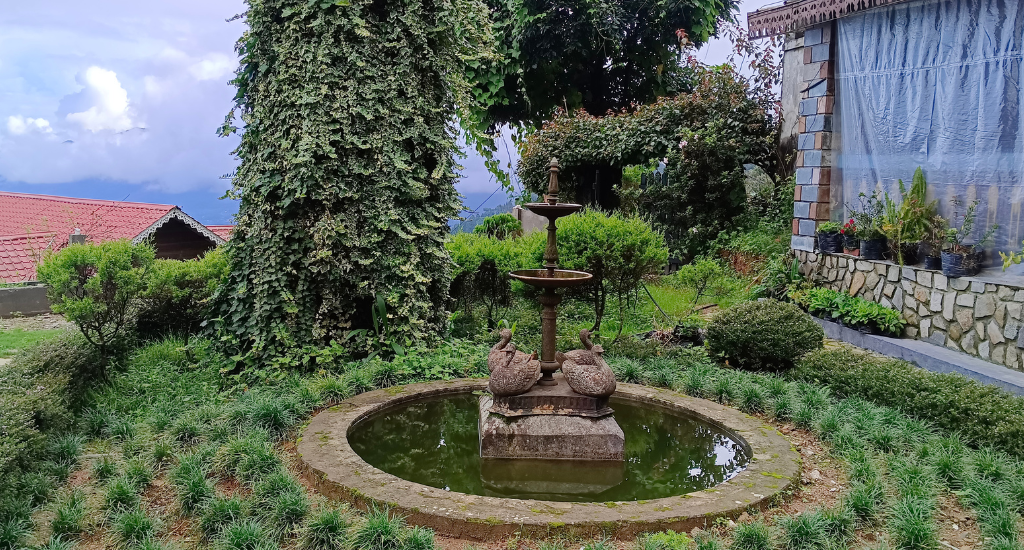
We just discovered a hidden gem in Darjeeling
Mist and memories intertwine in the village of Takdah, 28 km from Darjeeling, and as the fog lifts, it reveals not just a destination but a timeless escape into nature’s embrace.

Mist and memories intertwine in the village of Takdah, 28 km from Darjeeling, and as the fog lifts, it reveals not just a destination but a timeless escape into nature’s embrace.
The British left long ago, leaving a hidden gem a mere 28 km from Darjeeling, but far removed from the bustling touristy town they built to escape the summer heat of Bengal’s plains.
It’s a tranquil village known as Takdah, and its legacy lives on, preserved in mist, mountains, and memories of an era long gone in colonial-era bungalows and trails dotting the lush green landscape.
Takdah, derived from the local Lepcha language, translates to fog or mist, a name that befits the village perfectly. Enveloped by ethereal clouds clinging to the mountains, Takdah casts a spell on 21st-century visitors seeking a respite from the chaos of the competitive world.

“Takdah started as a military cantonment during the British rule in the 1900s, and many British officers used to stay here. The bungalows were built for their accommodation in traditional British architecture with slanted roofs, and many still stand here as a testimony to the olden days,” said Debasish Pradhan, a local guide.
Most of these heritage bungalows, constructed between 1905 and 1915, found new owners among the rich and elite businessmen in Kolkata after Independence. There were 29 bungalows till a few years ago. Some of them have been converted into government offices and schools. The Takdah clubhouse is now the forest guesthouse and Rani Kothi, a jewel in the crown, has morphed into a church.
Also Read: Jharkhand’s McCluskieganj struggles to stay alive
Today, some families still hold onto these architectural relics, while others have been repurposed for commercial use, providing accommodations for tourists, Pradhan said. Only 15 bungalows remain well-appointed, while the rest have deteriorated with time.
Situated 650km straight north of Kolkata, the village is a paradise for nature enthusiasts. Its winding lanes, adorned with dense oak and pine trees, echo with the melody of gurgling waterfalls and the harmonious chirping of birds.

In this picturesque village, silence and nature do a pas de deux in perfect harmony. The enchanting allure of Takdah lies not only in its natural beauty but also in its refreshing tea.
Takdah’s charm extends beyond the nostalgic embrace of colonial bungalows. A mere 3km away, the tea gardens of Tinchuley unfold as another captivating facet. The rolling hills, flanked by tea gardens on both sides, create a poetic landscape, inviting those inclined towards romanticism or eager to pen verses in an ode to nature.
Major tea plantations in Takdah, including Rungli, Rungliot, Gielle, Jinglam, and Teesta Valley Estate, contribute to the scenic allure. The Tinchuley Gumbadara viewpoint offers a breathtaking panorama of the snow-capped Himalayas with the Kanchenjunga at its peak.
Also Read: 5 unique homestays across rural India

For those captivated by wild blooms, Takdah Orchid Centre stands as a favoured destination. Once the base for the British army, this centre now houses a captivating array of wild orchids, courtesy of the West Bengal forest department.
Adding a spiritual touch to the village, the Dechhen Pema Tshoiling monastery, locally known as Takdah monastery, attracts tourists seeking moments of serenity.
Perched atop a hill, a flight of stairs from the main bazaar, the monastery offers a panoptic view of the tea gardens below, the bungalows, and the mountains rolling away to a distant horizon like a Paul Cézanne painting.

Rigzin Jgyal Tshen, the 32-year-old khenpo or abbot, said it was built in 1985. “Tourists come here to visit the monastery regularly. Most of them are from Bengal and Sikkim. We also impart education to Buddhist children here,” he said. “Most people are not aware of the place, although it’s so close to Darjeeling. It is not congested like other tourist spots in the hills.”
In recent times, the silent beauty of Takdah has found its way into the limelight, thanks to social media promotions. Anand Moktan, a heritage bungalow owner, expressed gratitude: “People have started coming here thanks to the YouTubers and bloggers who describe the beauty of the village on social media. The village has 20-25 guesthouses that were almost full during this year’s tourist season that ended by June first week.”
Takdah beckons visitors throughout the year, with winters and summers deemed the best times to savour its enchantment. However, trips during the monsoon are cautioned against due to regular rains and mountains cloaked in clouds, hindering sightseeing.
Also Read: Rural homestays for solo, offbeat travellers

Accessible by road, the journey from Siliguri takes around 3.5 hours. The nearest railway stations are New Jalpaiguri (NJP) and Siliguri Junction, with Bagdogra being the closest airport. While a narrow-gauge toy train from NJP to Ghoom is an option, it takes a leisurely 7-8 hours.
With guesthouses and homestays, Takdah offers a haven for all, complete with a diverse culinary experience.
The lead image shows a glimpse of the Takdah village (Photo by Gurvinder Singh)
Gurvinder Singh is a journalist based in Kolkata.